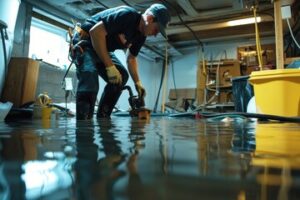Pianos are extremely heavy and difficult to maneuver through doorways, corners and stairs without damaging the piano or your home. Hiring professional piano movers is the safest way to get your piano moved.

While regular movers may say they can move a piano, they don’t have the expertise or specialist equipment needed to do so. Contact Piano Movers Colorado Springs for professional help.
Pianos are large, heavy, and delicate instruments that require special care when transporting them. Professional piano movers can help you move your instrument safely and efficiently, so it arrives at its new home in perfect condition. They can also help you choose the right equipment for your relocation, such as specialized dollies and ramps.
When choosing piano movers, be sure to ask about their experience and expertise in handling the type of piano you have. It is essential that they understand how to maneuver a piano through small doorways and tight spaces without damaging it or your property. You can also check their reputation and reliability by looking at customer reviews on a shipping platform like uShip.
A good piano mover will have years of experience under their belts and know how to handle the instrument’s weight and delicate structure. They can also navigate tricky spaces and tight hallways with ease, which would be difficult for someone who has never moved a piano before.
Another important consideration when choosing a piano mover is their insurance coverage. It is important that the piano movers have liability insurance in case of damage during the transportation process. This will ensure that you are not responsible for any damages incurred during the move. You can also look for a company that offers additional protection through uShip’s Protection Plan, which will cover any gaps in your carrier’s insurance.
Moving a piano requires skill and knowledge that most people do not have, so it’s best to leave this task to professionals. While it is tempting to save money by moving a piano yourself or with the help of friends, you could end up paying for expensive repairs later on. Hiring a professional piano mover is the safest and most convenient way to transport your instrument. They will take the time to properly prepare and secure your instrument, and they will use a variety of tools and techniques to ensure that it is transported without any damage. They will also provide you with a free quote before starting the job.
Insurance
When choosing a piano moving company, make sure they are fully licensed and insured. This is essential for ensuring that you are protected in case of any unexpected incidents during your move. Insurance coverage also provides peace of mind knowing that if something goes wrong, you will be reimbursed for the damages. You should look for movers that offer liability and cargo insurance to ensure that your piano is fully covered during transit.
Pianos are vulnerable to damage during transport due to their size and fragility. Professional movers have the experience and knowledge to minimize this risk by taking a number of precautions during the move. These include wrapping the piano in specialized padding, using climate-controlled vehicles, and employing secure loading and unloading methods. This prevents scratches, dents, and structural problems that can damage the piano.
Whether you’re moving across town or across the country, you’ll want to hire a professional piano movers with extensive experience and a proven track record. A reliable moving company will provide you with a detailed quote and offer several options for protection. Check the quotes for any hidden fees, and make sure that the insurance coverage meets your needs.
There are a few different types of piano moving insurance available, including basic coverage and full-value protection. A basic policy typically covers a set amount per pound of the piano’s weight, while a full-value policy offers more comprehensive protection. Additional coverage options from third-party providers are also available, and can be tailored to suit your specific needs and budget.
When comparing piano moving quotes, be sure to compare coverage limits and deductibles. A higher deductible may result in lower insurance coverage, but it can still provide you with peace of mind during the move. You should also ask each mover about their experience with pianos and the type of equipment they use. This will help you determine which company is the best fit for your relocation needs.
Pianos are a complicated, heavy, and fragile instrument that require specialized care and handling to transport safely. Although they can be moved by amateur movers, doing so will result in expensive damages that will outweigh the cost of hiring a professional piano mover. Luckily, there are several reputable piano movers that provide high-quality service at an affordable price.
Safety
Professional Piano Movers have the knowledge, skills, and proper equipment to safely move pianos. They use protective padding and specialized lifting techniques to minimize the risk of damage to both the instrument and its new home. They also know how to prepare the piano for transportation, including disassembly and proper packing materials. This preparation minimizes risks and makes the process easier for everyone involved.
Pianos are large, heavy instruments that pose unique challenges during transport. Attempting to move one without the proper equipment and experience can result in serious injuries or expensive damage to your property. It’s important to choose a reputable moving company with the right credentials and insurance coverage. Typically, reliable piano movers offer liability and cargo insurance to cover any damages that may occur during the relocation process.
In addition to the appropriate equipment and lifting techniques, piano movers have access to a wide range of tools and supplies to keep your property safe throughout the move. For example, they can utilize a special four-wheeled cart to make transporting the piano more manageable and safer than using a standard dolly. They can also add a skid board for additional stability. They can even use padded covers to protect your floor from scratches or dents during transport.
Another important consideration is safety for movers themselves. Moving large objects can cause back strain and other health issues, so it’s important to hire a professional mover who is trained in handling fragile and heavy items. Professionals can also help you move other specialized items, such as safes and hot tubs, which are typically too heavy or large for an average person to handle on their own.
Before the movers arrive, they’ll ensure that the path to be traveled is clear and free of obstructions. They’ll measure doorways and staircases to ensure that the piano will fit, and they’ll remove furniture, rugs, and other decorations to prevent them from getting in the way during the move. This pre-move preparation significantly reduces the risk of accidents and injuries during the move. It also minimizes the chances that the piano will be damaged during transit by preventing it from shifting in the truck.
Reputation
Choosing a piano moving company requires careful consideration. You want to make sure you’re hiring a trustworthy business with a solid reputation for providing high-quality service. It’s also important to check out the company’s licensing and insurance coverage before making a decision. This will provide you with protection in case of any accidents or damages during transit.
A good way to determine if a piano moving company is reputable is to ask for referrals from friends and family members who have used them in the past. You should also read online reviews and testimonials from previous customers. These will help you decide whether or not the company is a good fit for your needs.
Reputable Piano Movers offer specialized equipment for handling and transporting these delicate instruments. They use tools like piano dollies, straps, and padding to protect the instrument from vibrations and movement during transport. They also have a plan for maneuvering the piano safely at both the pickup and delivery locations. They can even dismantle and reassemble grand pianos, as well as smaller spinets and keyboards.
Many homeowners try to move their pianos on their own, but this is often a dangerous and costly endeavor. Not only can DIY moving cause serious damage to the piano, but it can also lead to physical harm to people and pets. Hiring a reputable piano moving company is the best way to ensure your piano’s safety and avoid costly mistakes.
When selecting a piano moving company, you should also consider their pricing structure. A reputable piano moving company will be transparent about their charges and fees. They will also be willing to answer any questions you may have about their services. A good way to gauge a piano moving company’s affordability is by comparing their quotes with their competitors.
